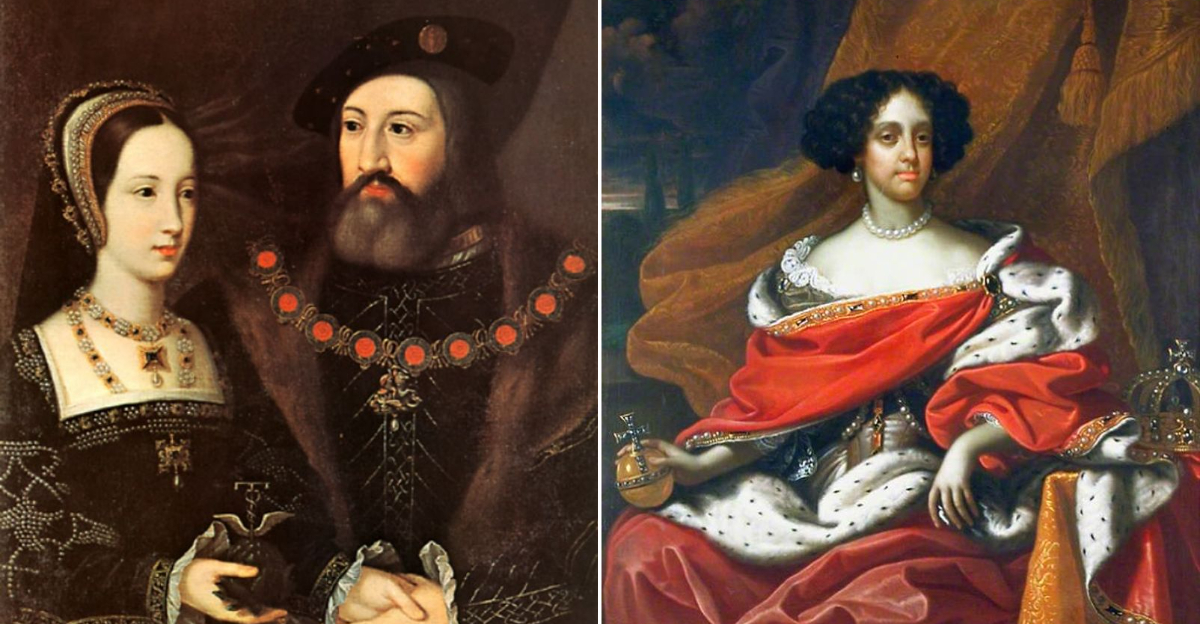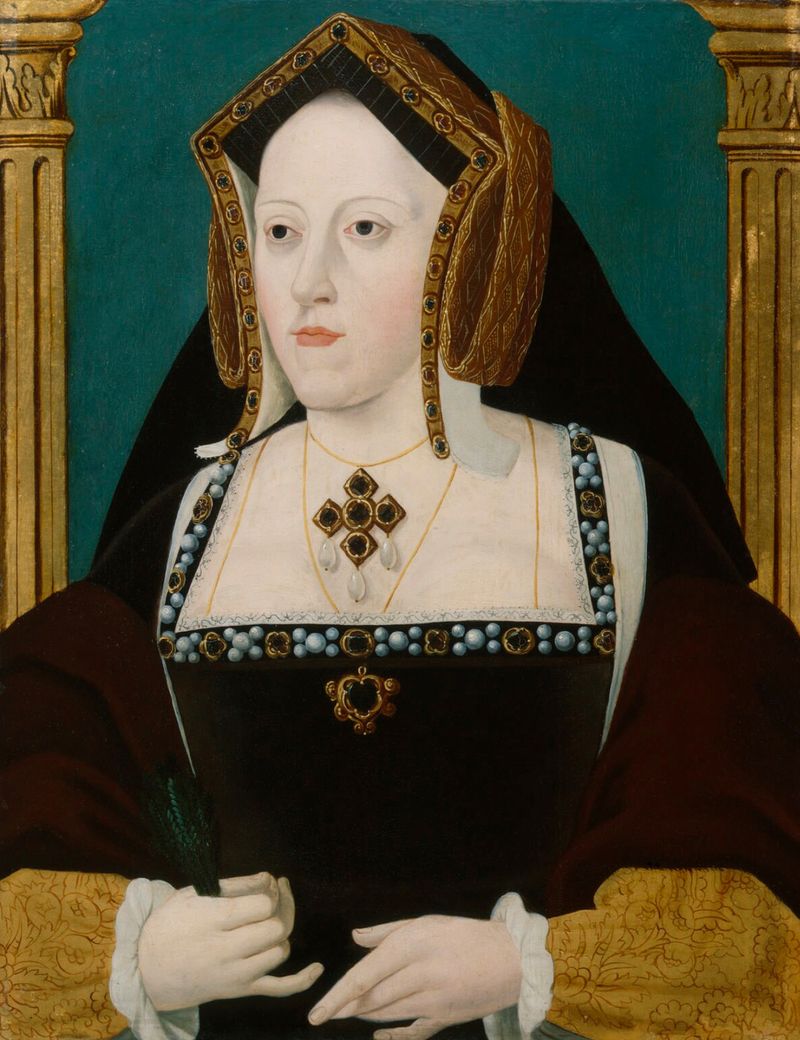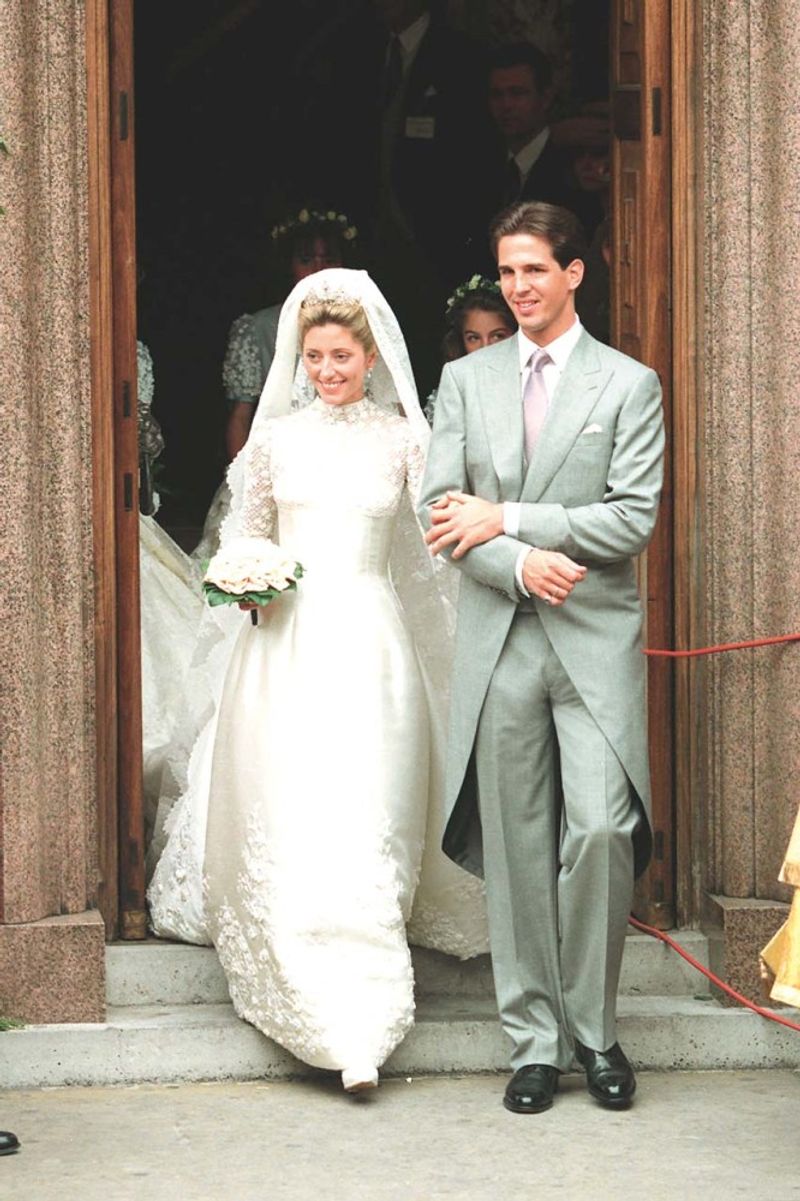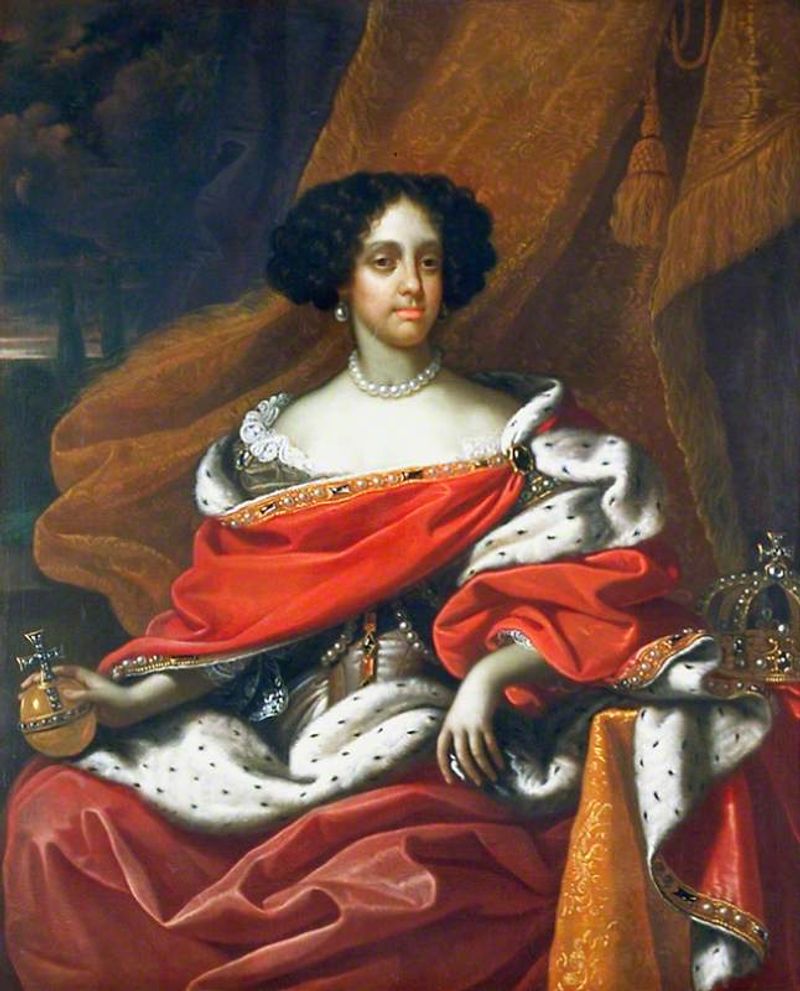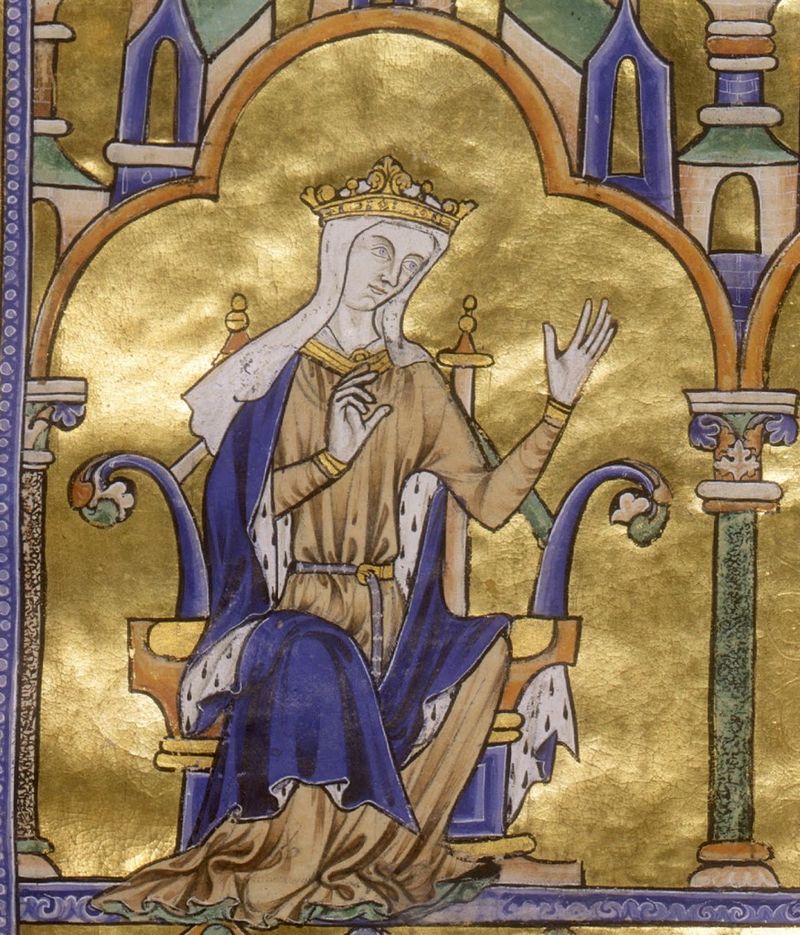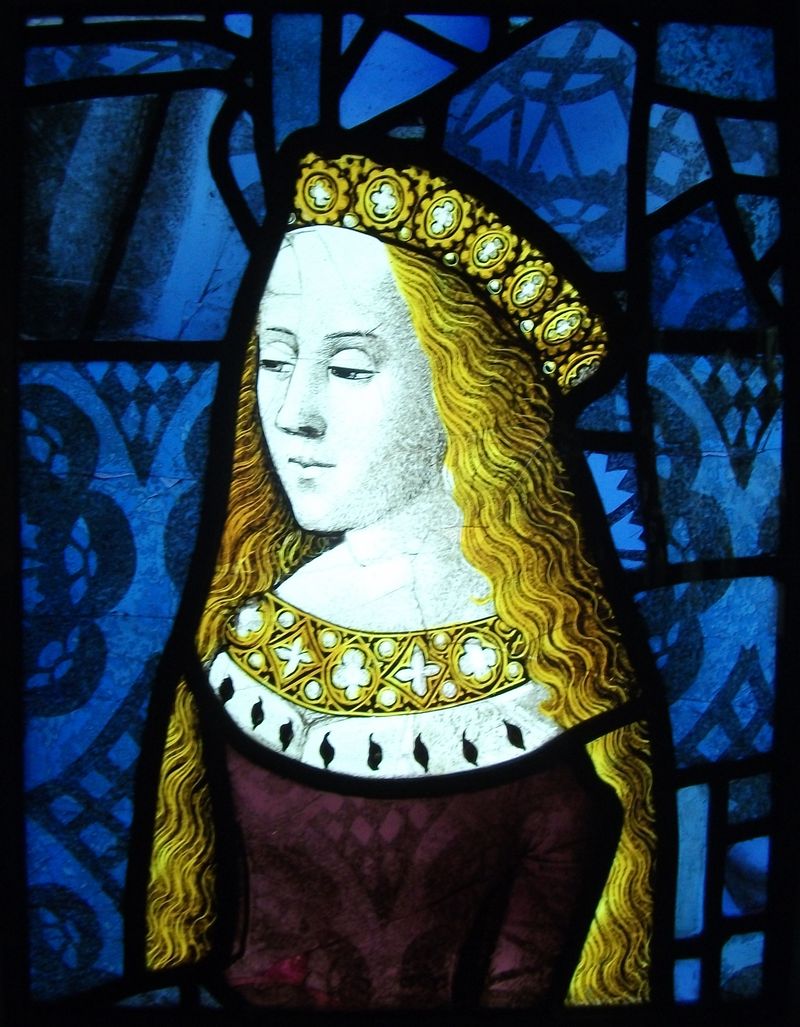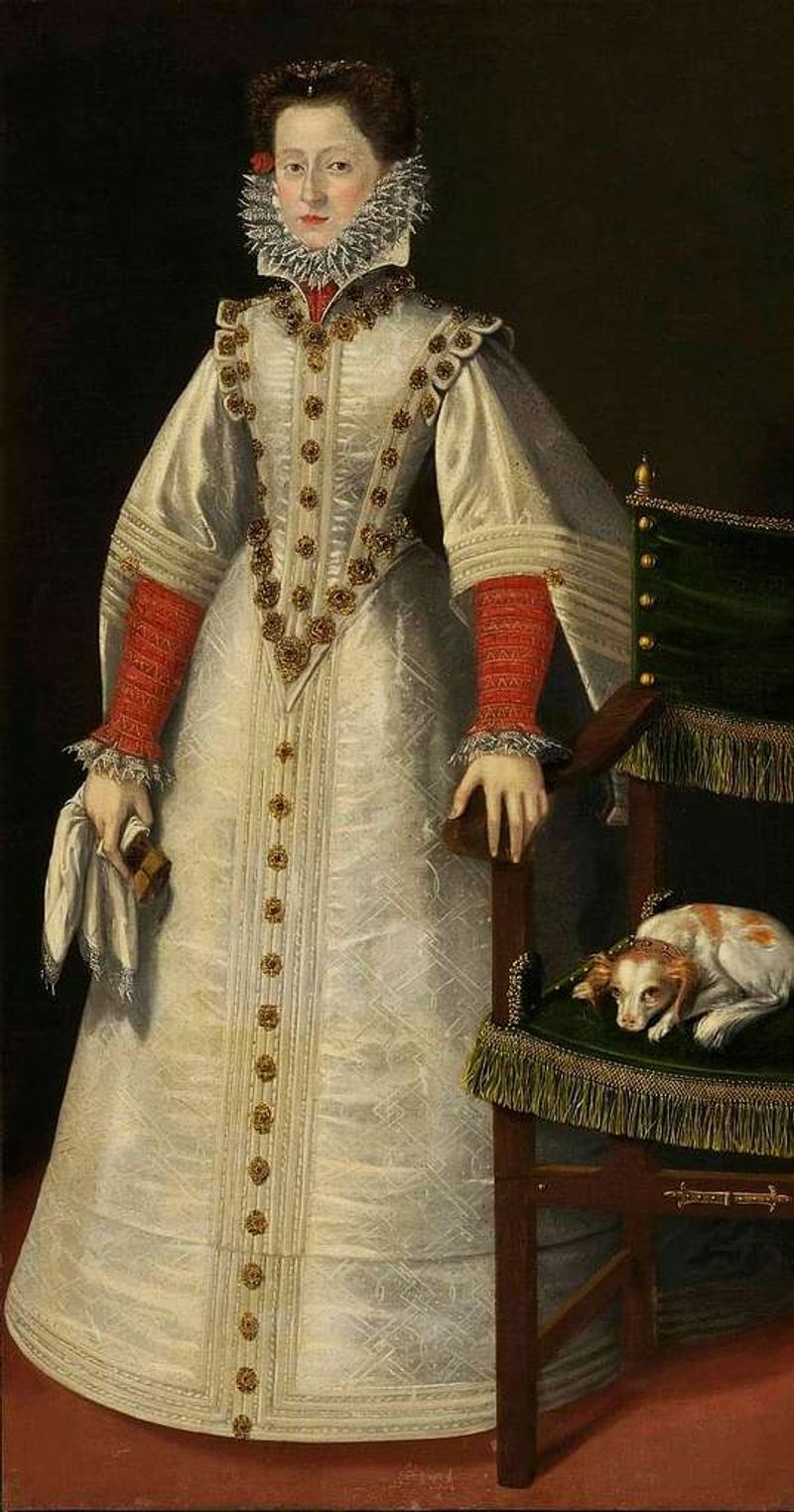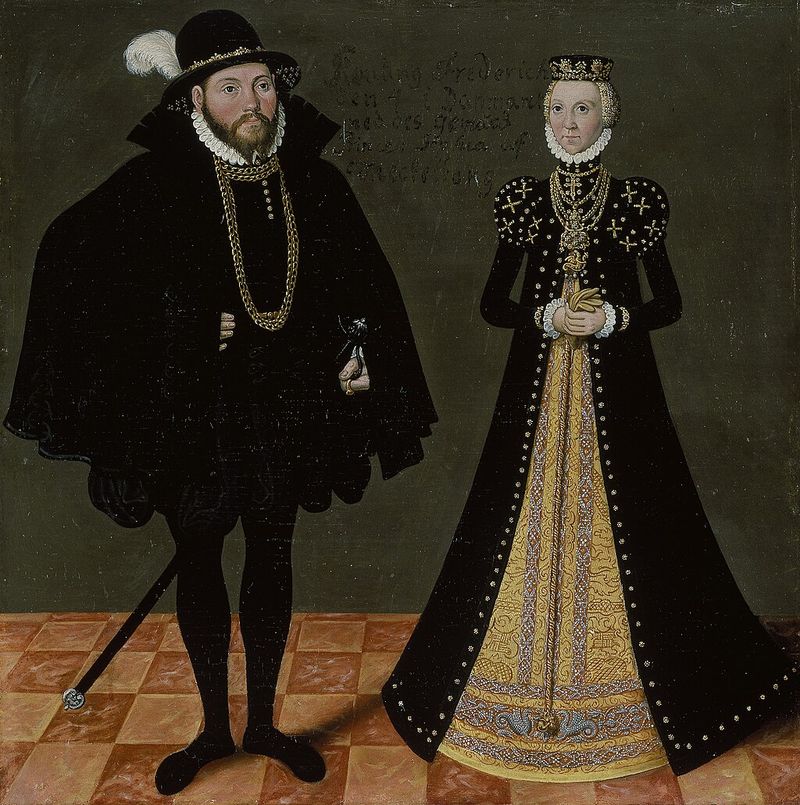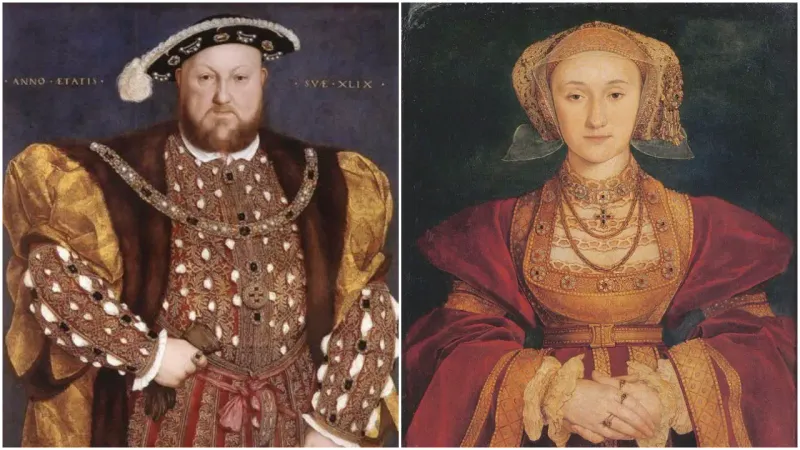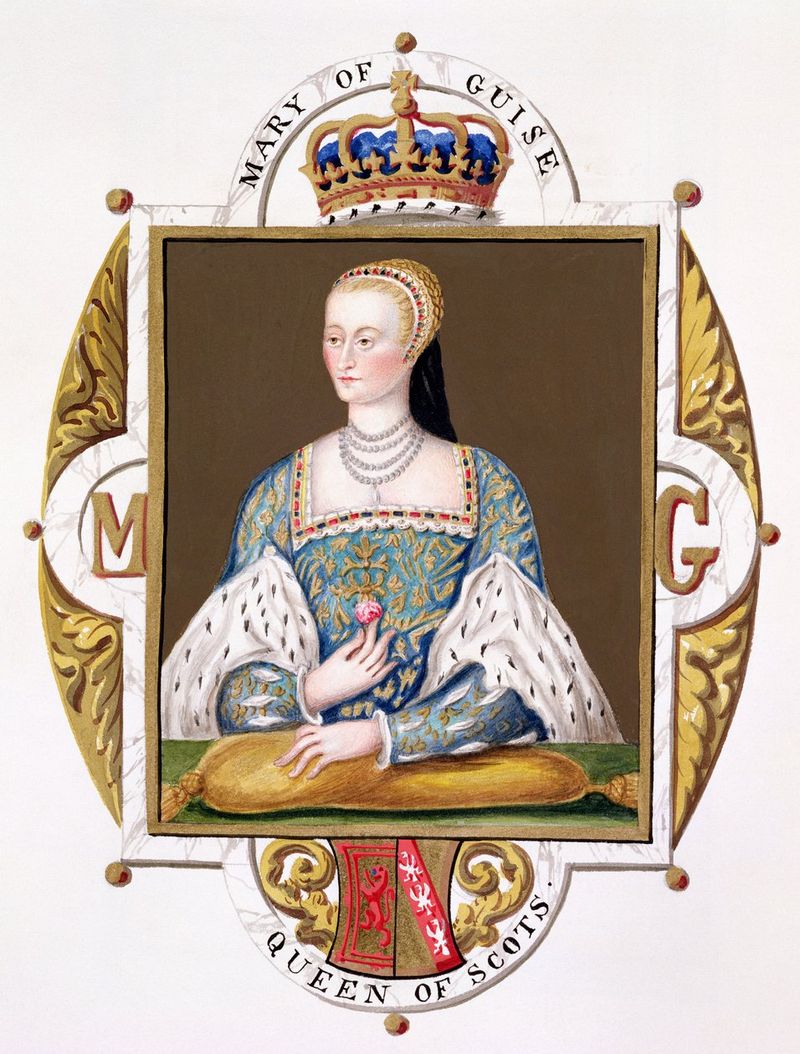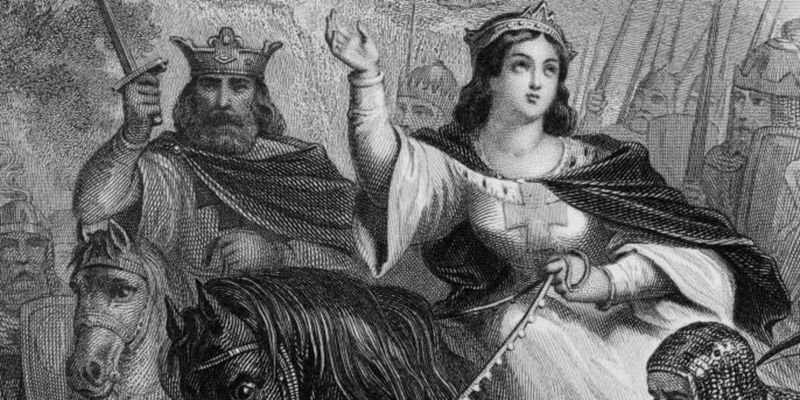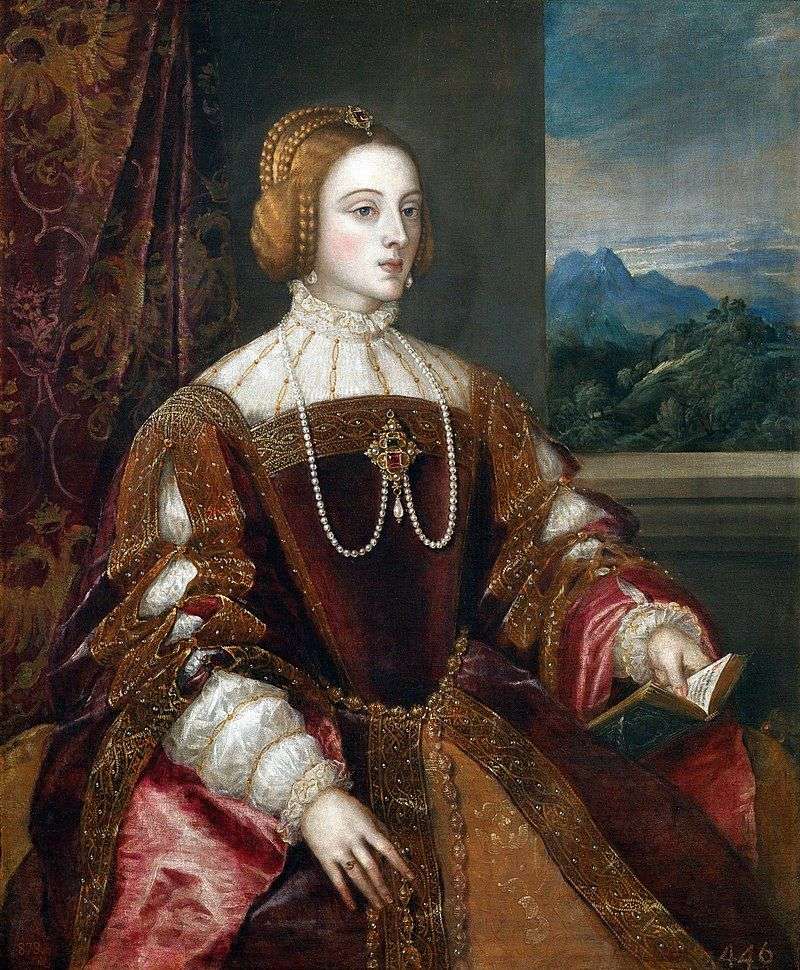Throughout history, royal dowries have done more than secure marriages—they’ve changed the fates of entire empires. Some were so extravagant they drained treasuries, cost kingdoms dearly, and left legacies still remembered today. Here are 15 royal dowries that were so massive, they nearly—or completely—bankrupted the countries that gave them.
1. Catherine of Aragon – Spain to England
Catherine of Aragon’s promised dowry of 200,000 escudos was a testament to Spain’s ambitions. Initially married to Arthur Tudor, her dowry carried over to her union with Henry VIII.
Unpaid portions led to tensions that extended beyond personal grievances, affecting diplomatic relations. The economic strain of the dowry highlighted the complexities of royal alliances.
Catherine’s marriage became a catalyst for broader political changes, including England’s break from the Catholic Church. Her dowry, intended to secure peace, instead fostered a legacy of dispute and transformation.
2. Marie-Chantal Miller – USA to Greece
In 1995, Marie-Chantal Miller’s $200 million dowry was a modern marvel. Given by her billionaire father, it was not kingdom-ruining but certainly lavish.
The dowry underscored the opulence of late 20th-century royal weddings. While Greece didn’t face economic collapse, the sheer scale of wealth resonated globally, highlighting the evolving nature of royal marriages.
This grand gesture reflected the blending of old royal traditions with new-world wealth, marking a unique chapter in royal history where finance and fairy tale entwined.
3. Catherine of Braganza – Portugal to England
With a dowry that included money and strategic ports like Tangier and Bombay, Catherine of Braganza’s marriage to Charles II in 1662 was more than just nuptial bliss. Portugal’s coffers were strained, and the country took years to recover financially.
Her dowry significantly bolstered England’s imperial ambitions. Yet, the cost to Portugal was immense, leaving a lasting impact on its economy. The dowry helped lay the foundation for future British colonial endeavors, marking the beginning of a new era for England, but at Portugal’s expense.
The marriage itself was politically motivated, intertwining the fates of two nations.
4. Anne of Denmark – Denmark to Scotland
Anne of Denmark’s dowry included the Orkney and Shetland Islands, pledged as collateral. Denmark’s struggle to redeem this debt lingered for generations.
The marriage to James VI of Scotland in 1589 was fraught with financial implications, highlighting the challenges of balancing royal commitments with economic realities.
Anne’s dowry transformed regional politics, emphasizing how royal marriages could redefine territorial landscapes and economic priorities, leaving a lasting legacy on both Denmark and Scotland.
5. Mary Tudor – England to France
Mary Tudor’s marriage to Louis XII in 1514 brought a dowry of 300,000 crowns. This union, however, ended abruptly with Louis’s death, causing unexpected financial strain.
Her secret remarriage to Charles Brandon, Duke of Suffolk, compounded the fiscal turmoil. The dowry, intended to unify, led instead to diplomatic and financial challenges.
The tale of Mary Tudor is a reminder of the unpredictability of royal marriages, where even the grandest plans could unravel, leaving kingdoms to navigate the economic aftermath.
6. Blanche of Bourbon – France to Castile
Blanche of Bourbon’s massive dowry of 300,000 gold florins in the 14th century proved too much for France’s treasury. The financial burden came during turbulent times, exacerbating existing national challenges.
Her marriage to Peter of Castile was meant to strengthen alliances but instead highlighted the fiscal strain royal unions could impose.
Blanche’s story is a reflection of medieval politics, where the allure of power was often intertwined with economic sacrifice, leaving lasting consequences on the nations involved.
7. Cecily of York – England to Scotland
Cecily of York was set to bring 20,000 marks to Scotland through her proposed marriage. Political tensions and unpaid amounts led to this union falling through, intensifying hostilities between England and Scotland.
The failed dowry exchange highlights how monetary negotiations could sway diplomatic relations, often with long-lasting repercussions.
Cecily’s experience underscores the unpredictable nature of royal engagements, where financial disputes could alter the course of nations and fuel centuries-old rivalries.
8. Maria Alexandrovna – Russia to Britain
Maria Alexandrovna’s 1874 marriage to Prince Alfred of Britain included a dowry so substantial it strained the Russian Empire’s budget. Her luxurious trousseau further exemplified the era’s opulence.
The dowry was a symbol of Russian wealth, yet it highlighted vulnerabilities within the empire’s finances.
Maria’s story illustrates the intricate dance of royal diplomacy, where marriage alliances were as much about political power as personal unions, often leaving lasting impacts on national economies.
9. Cayetana Fitz-James Stuart – Spain
Cayetana Fitz-James Stuart’s 1947 wedding as the 18th Duchess of Alba was a spectacle of aristocratic opulence. Costing 20 million pesetas, it showcased Spain’s old-world charm amidst contemporary financial struggles.
Her marriage was an emblem of the enduring power of aristocracy in post-war Spain, reflecting the country’s complex social dynamics.
Cayetana’s wedding emphasized the dichotomy between traditional lavishness and modern economic challenges, painting a vivid picture of Spain’s historical journey through the lens of a single, grand event.
10. Pernštejn Daughters – Bohemia
In Bohemia, the Pernštejn family gave such large dowries to their daughters in the 16th century that they were forced to sell off estates. This led to the family’s financial collapse, illustrating the precarious balance between social expectation and economic reality.
Their lavish spending on dowries was a double-edged sword, enhancing social status while depleting financial resources.
The Pernštejn story serves as a cautionary tale about the long-term impacts of prioritizing social prestige over fiscal sustainability, echoing through history’s corridors.
11. Sophie of Mecklenburg-Güstrow – Denmark
Sophie of Mecklenburg-Güstrow’s dowry helped finance Denmark’s military, showcasing the role of royal marriages in national policy. However, the dowry’s size reshaped Denmark’s economic priorities, underscoring the influence of marriage alliances on broader governance.
Her 1572 marriage to Frederick II illustrated how dowries could be a tool for political strategy, affecting military and economic landscapes.
Sophie’s dowry, meant to secure peace, instead redefined Denmark’s fiscal strategies, leaving an indelible mark on the kingdom’s history.
12. Anne of Cleves – Germany to England
Anne of Cleves brought a dowry of 100,000 gold florins when she married Henry VIII in 1540. The marriage ended within six months, creating a messy financial aftermath.
Despite the generous dowry, the alliance failed to fulfill its political aspirations, leading to diplomatic tensions.
Anne’s brief marriage is a testament to the complexities of royal unions, where political and economic considerations often overshadowed personal compatibility, leaving kingdoms to navigate the fallout.
13. Marie of Guise – France to Scotland
Marie of Guise’s dowry to James V of Scotland included 100,000 crowns, boosting Scotland’s prestige. However, it strained France’s royal budget, illustrating the economic pressures of maintaining powerful alliances.
The dowry reflected the strategic importance of Franco-Scottish relations during turbulent times, with long-lasting effects.
Marie of Guise’s marriage played a crucial role in the shifting dynamics of European powers, embodying the intersection of personal union and political ambition.
14. Eleanor of Aquitaine – France to England
Eleanor of Aquitaine’s dowry included the vast Duchy of Aquitaine, shifting European power dynamics. Her marriage to Henry II of England in 1152 marked a significant geopolitical shift.
The duchy’s wealth and strategic position fueled centuries of conflict between France and England, becoming a focal point in their rivalry.
Eleanor’s dowry wasn’t just a financial exchange but a catalyst for historical change, illustrating how personal unions could shape the future of entire continents.
15. Isabella of Portugal – Portugal to Spain
In 1526, Isabella of Portugal’s dowry supported Charles V’s vast imperial ambitions. While aiding Spain’s pursuits, Portugal’s resources were significantly depleted, influencing its global standing.
The marriage was emblematic of the era’s political intricacies, where dowries were crucial in inter-empire negotiations.
Isabella’s dowry exemplifies the profound impact royal marriages could have on national fortunes, intertwining personal vows with continental destinies, echoing through history with fiscal reverberations.
